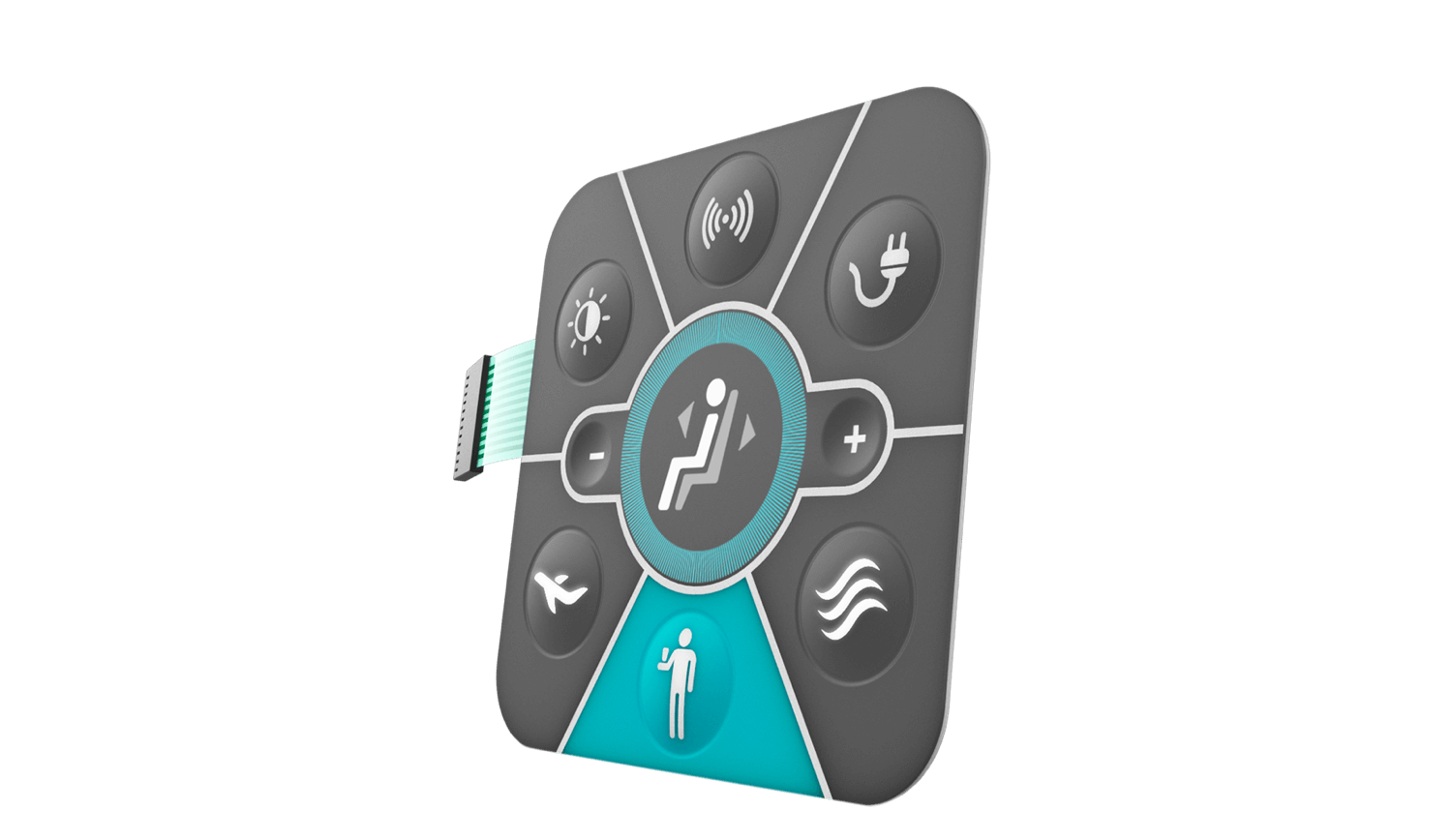Exactly How Membrane Switches Over Contribute to the Resilience of Electronic Control Panels
Membrane layer switches play a vital function in enhancing the toughness of electronic control panels, mainly through their multi-layered construction which supplies efficient security against ecological aspects such as moisture and dirt. The absence of moving components substantially decreases the likelihood of mechanical failings, making membrane layer switches perfect for demanding applications.
Definition of Membrane Layer Switches

Membrane switches are made to be thin and lightweight, making them appropriate for applications where room is limited. They can be made in different shapes, dimensions, and shades, supplying versatility in style that fulfills visual and useful needs. In addition, membrane layer buttons can incorporate various innovations, such as responsive responses and LED indications, enhancing user experience.
Due to their building, membrane switches are frequently resistant to dust, moisture, and general wear, adding to their longevity popular settings. Their seamless style not only helps with very easy cleaning yet additionally decreases the threat of mechanical failing, making them a recommended selection for suppliers looking for trusted customer interfaces in their digital control board.
Defense Versus Ecological Aspects
The style of membrane switches naturally supplies a degree of protection versus different environmental elements, which is vital for maintaining capability in difficult conditions - Membrane Switch. These buttons are commonly created with layers of flexible products that protect internal parts from wetness, dust, and pollutants. By encapsulating the wiring, membrane layer switches decrease the danger of short circuits and rust, which can considerably impair efficiency
Furthermore, using durable adhesives and sealers during manufacturing improves their resistance to ecological difficulties. Membrane buttons can sustain exposure to chemicals and solvents, making them ideal for markets such as food handling and healthcare, where health and cleanliness are vital. Their seamless surface area design likewise prevents the build-up of dirt and germs, promoting easier cleaning and upkeep.
Temperature level changes are an additional environmental worry, and membrane switches are crafted to function successfully throughout a broad array of temperatures (Membrane Switch). This flexibility guarantees that control board continue to be operational in various settings, from commercial settings to customer electronics
Effect On Customer Interaction
Individual communication with digital control panels is dramatically influenced by the design web link and capability of membrane switches. These switches supply a responsive user interface that enhances the overall customer experience, enabling intuitive navigation and control. Their responsive nature makes sure that customers obtain prompt feedback upon activation, which is essential for tasks needing accuracy and performance.
Additionally, the smooth surface of membrane layer switches over helps with easy cleansing and maintenance, advertising user confidence in the reliability of the user interface. This sanitation is specifically important in atmospheres where health is extremely important, such as clinical or food processing setups. Additionally, the small and lightweight style of membrane changes adds to the aesthetic appeal of control panels, encouraging user engagement with a contemporary and why not find out more sleek appearance.
In addition, the assimilation of aesthetic components, such as published icons and backlighting, helps users quickly recognize functions, minimizing the discovering curve connected with brand-new devices. Consequently, individuals can run gadgets much more effectively, bring about boosted performance and satisfaction. In recap, membrane layer switches play a crucial function in enhancing customer communication by combining capability, looks, and convenience of use, inevitably resulting in enhanced operational effectiveness.
Design Adaptability and Customization
Style flexibility and modification are vital aspects of membrane buttons, allowing manufacturers to customize electronic control panels to specific applications and individual demands. This versatility allows for the combination of numerous style components, such as colors, graphics, and structures, which can improve the visual charm and customer engagement of the control panel.
Membrane layer buttons can be customized in dimension go now and shape, suiting a wide variety of tools and applications, from industrial machinery to consumer electronic devices. This flexibility makes certain that producers can produce instinctive user interfaces that align with user expectations and functional needs. In addition, the ability to include distinct features such as backlighting or tactile comments further boosts usability, permitting for a more interactive experience.
Additionally, the manufacturing procedure for membrane layer switches supports the rapid prototyping of styles, allowing makers to repeat and fine-tune their principles promptly. This capacity not just increases the growth timeline yet likewise makes certain that the end product fulfills certain practical and visual requirements.

Cost-Effectiveness and Long Life
Cost-effectiveness and long life are substantial advantages of membrane layer buttons, making them an appealing option for makers and end-users alike. These switches are usually less costly to create than conventional mechanical switches, primarily as a result of their streamlined production processes and the reduced variety of elements required. This price benefit prolongs not only to first production but additionally to long-lasting operational expenditures, as membrane layer switches often call for less upkeep and have a lower failure price.
Additionally, the longevity of membrane layer switches adds to their total worth. Constructed from sturdy materials, they are immune to ecological factors such as wetness, dust, and chemicals, which can cause premature wear in various other switch kinds. The absence of moving components reduces mechanical failing, allowing membrane switches over to preserve capability over prolonged durations.
This longevity is especially beneficial in applications needing constant efficiency under demanding conditions, such as clinical devices and commercial tools. Inevitably, the mix of cost-effectiveness and longevity makes membrane changes a financially practical selection for manufacturers, giving dependable options that withstand the test of time while maximizing budgetary considerations.
Verdict
In conclusion, membrane buttons considerably improve the longevity of electronic control panels through their durable building and safety attributes - Membrane Switch. On the whole, membrane changes stand for a trusted and cost-efficient selection for boosting the long life and functionality of electronic control systems.